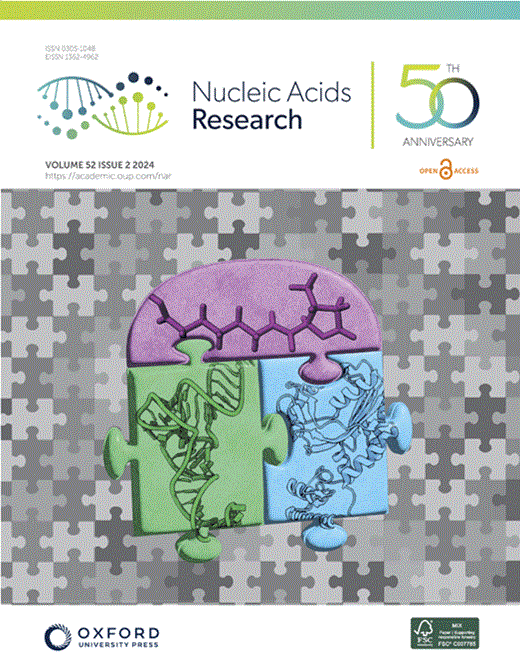Structural and mechanistic insights into the activation of a short prokaryotic argonaute system from archaeon Sulfolobus islandicus
IF 16.6
2区 生物学
Q1 BIOCHEMISTRY & MOLECULAR BIOLOGY
引用次数: 0
Abstract
Prokaryotic Argonaute proteins (pAgos) defend the host against invading nucleic acids, including plasmids and viruses. Short pAgo systems confer immunity by inducing cell death upon detecting invading nucleic acids. However, the activation mechanism of the SiAgo system, comprising a short pAgo from the archaeon Sulfolobus islandicus and its associated proteins SiAga1 and SiAga2, remains largely unknown. Here, we determined the cryo-electron microscopy structures of the SiAgo–Aga1 apo complex and the RNA–DNA-bound SiAgo–Aga1 complex at resolutions of 2.7 and 3.0 Å, respectively. Our results revealed that a positively charged pocket is generated from the interaction between SiAgo and SiAga1, exhibiting an architecture similar to APAZ-pAgo of short pAgo systems and accommodating the nucleic acids. Further investigation elucidated the conserved mechanism of nucleic acid recognition by SiAgo–Aga1. Both the SiAgo–Aga1 interaction and nucleic acid recognition by the complex are essential for antiviral defense. Biochemical and structural analyses demonstrated that SiAgo–Aga1 undergoes extensive conformational changes upon binding to the RNA–DNA duplex, thereby licensing its interaction with the effector SiAga2 to trigger the immune response. Overall, our findings highlight the evolutionary conservation of Agos across phylogenetic clades and provide structural insights into the activation mechanism of the SiAgo system.求助全文
约1分钟内获得全文
求助全文
来源期刊

Nucleic Acids Research
生物-生化与分子生物学
CiteScore
27.10
自引率
4.70%
发文量
1057
审稿时长
2 months
期刊介绍:
Nucleic Acids Research (NAR) is a scientific journal that publishes research on various aspects of nucleic acids and proteins involved in nucleic acid metabolism and interactions. It covers areas such as chemistry and synthetic biology, computational biology, gene regulation, chromatin and epigenetics, genome integrity, repair and replication, genomics, molecular biology, nucleic acid enzymes, RNA, and structural biology. The journal also includes a Survey and Summary section for brief reviews. Additionally, each year, the first issue is dedicated to biological databases, and an issue in July focuses on web-based software resources for the biological community. Nucleic Acids Research is indexed by several services including Abstracts on Hygiene and Communicable Diseases, Animal Breeding Abstracts, Agricultural Engineering Abstracts, Agbiotech News and Information, BIOSIS Previews, CAB Abstracts, and EMBASE.
 求助内容:
求助内容: 应助结果提醒方式:
应助结果提醒方式:


